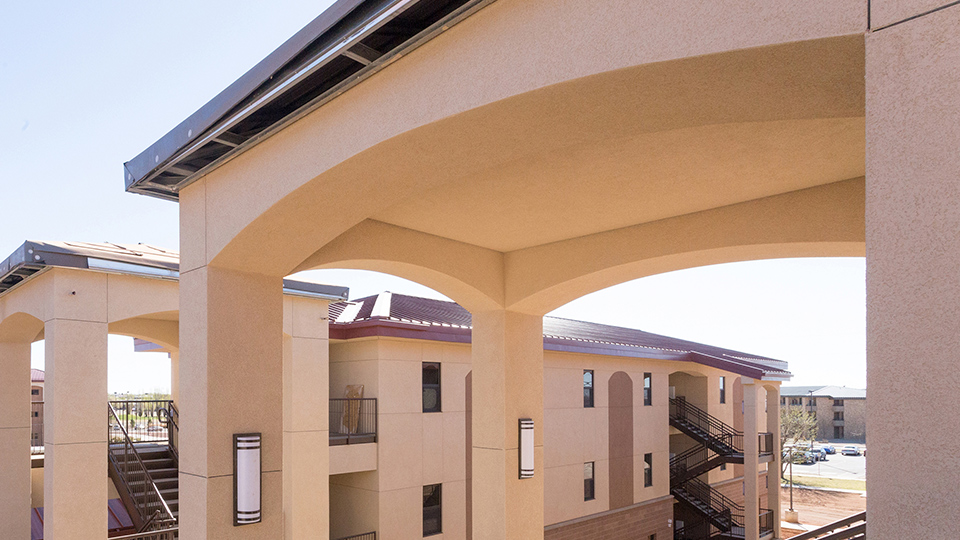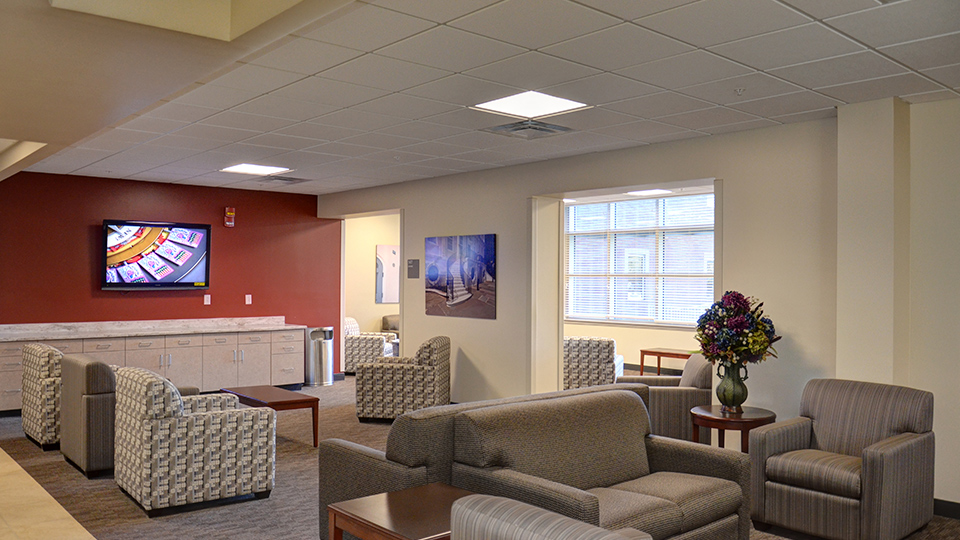Compare an old apartment building to a new or renovated one and you’ll see a lot of differences. Apartment construction norms have changed over the decades, reflecting a shift in property owners’ priorities from cramming as many tenants as possible into 20-story buildings to providing spacious, private living spaces and plenty of amenities for which renters and students will pay a premium.
But as much as apartment construction trends have shifted based on those priorities, they’ve also shifted based on our culture.

People want privacy, space and recreation
The evolution of the American household has played a big part in why new apartments and dormitories look the way they do today.
Families used to be bigger. Households consisting of four, five, six or more children were common throughout most of the 20th century. Very little was private; these large families often lived in older homes and shared basically everything.
Older apartments and dormitories reflect these households as kitchens, bathrooms, closets and storage areas were shared. Climate control of individual units was a luxury reserved only for the wealthy. New and renovated apartment buildings, on the other hand, contain perks and amenities that rival what’s available in many single-family homes.

For one thing, larger modern apartments emphasize tenants’ privacy. Bedrooms are bigger and include their own full bathrooms and large closets. That’s because more and more renters or students come from smaller families who were raised in the same houses as much bigger families once were. Modern apartments and dormitories reflect the fact that people expect levels of privacy and comfort similar to those they enjoyed growing up.
For another, new apartment buildings are rarely built without an accompanying abundance of parking. More people own personal vehicles now than at any time in the past. That fact often drives design and construction decisions for proposed new campus housing: a student’s decision whether to attend a school may hinge on how easy it will be to park her car.

New and newly-renovated apartments and dormitories also come with amenities that mirror the priorities of their modern tenants, like large swimming pools, top-of-the-line fitness centers and lounges that cater to the tech-savvy.
In collegiate settings, students demand a variety of dining options and plenty of space to enjoy meals.
The demand for maximum efficiency
Modern apartments and dormitories also emphasize efficiency and sustainability. That’s partly to attract tenants and to keep operating costs down. But ensuring efficiency while still making living quarters attractive becomes a challenge in public student housing construction. Institutions must balance providing living spaces students will want to inhabit while also spending finite capital funds wisely.
This is done by consulting closely with architects and builders to ensure every square foot of a dormitory is usable. As an example, modern dormitories are designed to have as little corridor space as possible. Hallways only serve one purpose; excessive amounts of them are a poor use of limited space.

Finding the right contractor
Whether you’re a property owner planning to build a new apartment building or renovate an old one, it’s important to recognize the ways an evolving culture informs how buildings are designed and built. Property owners who understand that apartment construction trends are driven by the tastes of tenants have the upper hand in attracting discerning residents.
But such cultural mastery isn’t easy. That’s why Design-Build experts at The Korte Company make great partners for anyone considering an apartment construction project. With experience building student, tenant and military housing across the U.S., we’re in touch with people’s ever-changing preferences and can help you create modern, comfortable living spaces tenants will be proud to call home. Download the guide below to learn more about how The Korte Company turns plans into reality.
